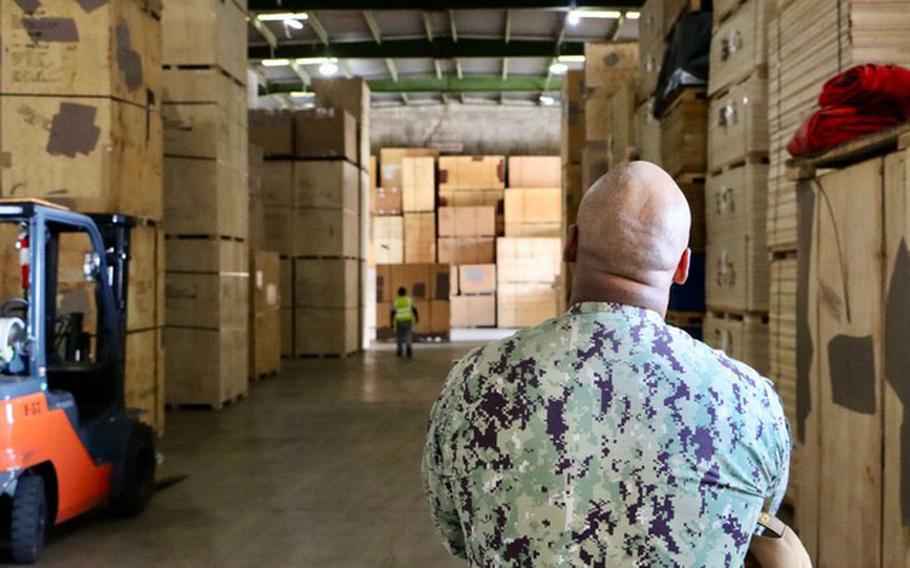
Capt. Sean Andrews, commander of Fleet Logistics Center Pearl Harbor, tours a local agent’s household goods storage in Honolulu on April 3, 2025. (Wesley Burgos/U.S. Navy)
Defense Secretary Pete Hegseth on Tuesday ordered sweeping changes to the military’s household goods moving system, citing frustration among service members with a newly instituted contracting system.
“We know it’s not working, and it’s only getting worse,” he said in a news release Thursday. “We’ve heard your concerns about contractor performance, quality and accountability.”
Hegseth ordered the formation of a Pentagon task force to improve the workflow behind permanent change of station moves under the Global Household Goods Contract, or GHC.
Moves under the contract began with a slow rollout more than a year ago but ramped up in earnest this year.
Under the contract, U.S. Transportation Command is transferring oversight of roughly 300,000 to 400,000 annual military and Coast Guard moves to HomeSafe Alliance, a joint venture between Tier One Relocation and KBR, formerly Kellogg Brown & Root.
HomeSafe oversees all contracts for packing, trucking, shipping and storage of goods in GHC moves.
The command’s legacy system for relocations has continued to operate in parallel with GHC, which was expected to handle most domestic moves by peak PCS season this summer.
The moving industry in large part has declined to sign on to GHC because, among other issues, the new system’s payment rates are on average 30% lower than what the government pays in the legacy system.
Hegseth directed Transportation Command “to develop and implement rates similar to the legacy system within GHC to increase vendor capacity and ensure enough companies are willing to move military family household goods to the next duty station,” according to the release.
GHC was created, paradoxically, because of service member complaints over the performance of the legacy system.
But GHC has been plagued by late pickups and deliveries, and several U.S. senators commenced inquiries this spring into its shortcomings.
In late April, the Army suspended the use of GHC for all moves “pending further leadership review,” the service said in an April 30 memo.
Thursday’s release said Transportation Command should “fully leverage” both GHC and the legacy tender-of-service program in dealing with peak season.
“We’re going to split this year’s peak moving season between our new and legacy systems,” Hegseth said in the release. “[T]hose systems can talk to each other and work together, so we’re going to use both in every way possible.”
HomeSafe welcomed the move.
“DoD raising our rates to account for significant inflation from the last four years would substantially benefit our ability to facilitate world-class moving services for our nation’s heroes,” the company said in a statement Thursday.
Federal News Network reported Wednesday that Andy Dawson, director of the command’s Defense Personal Property Program overseeing GHC, was recently removed from his position.
Transportation Command did not respond to questions emailed Wednesday regarding Dawson and the status of GHC.
Hegseth’s memo also requires GHC and the legacy program to provide weekly updates to the Office of the Under Secretary of Defense for Acquisition and Sustainment and establish internal controls within Transportation Command, such as a hotline, “to maintain direct access with global transportation shipping offices to mitigate any GHC or [tender-of-service] interruptions.”
The memo also directs that the government’s reimbursement rate for do-it-yourself moves be increased by 30%.
Hegseth said that in some cases the reimbursements for personally procured moves were so low that service members were paying out of pocket.